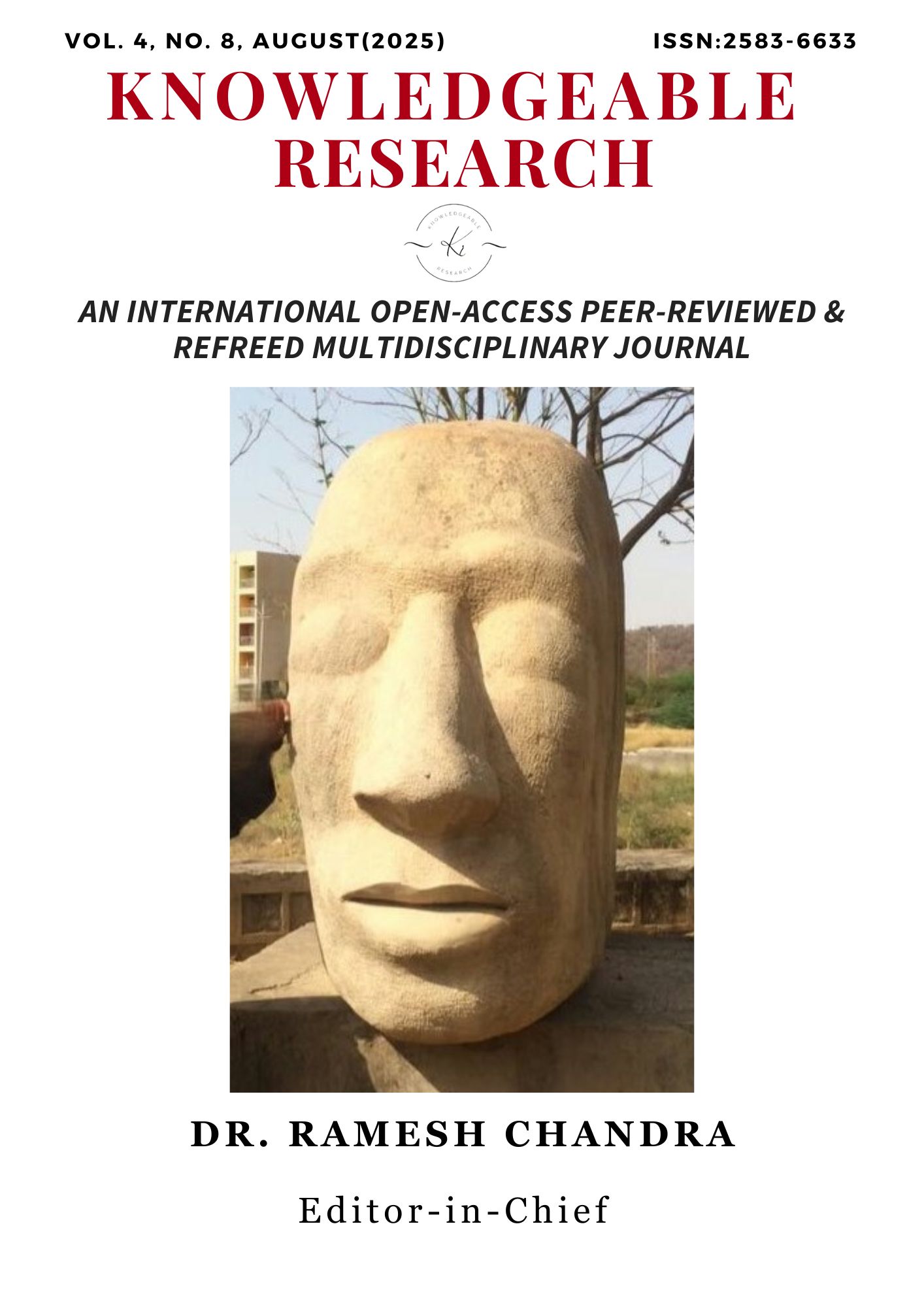Poetic elements contained in the Vedas
Main Article Content
Abstract
Vedic literature is the oldest treasure of Indian culture, in which there is a wonderful coordination of knowledge, science, religion, philosophy and poetry. Although Vedic hymns were originally composed for sacrificial and religious purposes, yet poetic beauty, emotionality and artistry are also present in them. This is the reason why Vedic literature is considered the first phase of the poetic tradition.
The verses described in Rigveda present excellent examples of rhyme, ornamentation and rasa. Similes, metaphors, alliteration etc. figures of speech appear naturally in the praises of the gods. Like the depiction of Agni Dev-
“Agnimile Purohitam Yagyasya Devamritvijam.” (Rigveda 1.1.1)
Here Agni has been called the priest and god of Yagya, which is an example of both metaphor and praise. While describing the glory of Indra, it was said –
“Sa Indrah Pur Eta Ni Vajri Hanti Vritrani.” (Rigveda 2.11.5)
It contains a heroic depiction of Indra's bravery. Samveda itself is a book of music and poetry. Despite being a ritualistic language, there is a poetic flow in Yajurveda. Atharvaveda contains songs, mantras and prayers related to folk life, which have a glimpse of simplicity, sentimentality and folk music.
The depiction of nature is also very poetic. It was said in praise of rivers-
“Ima me Ganga Yamuna Saraswati Shutudri Stoma Sachta Purushnya.” (Rig Veda 10.75.5)
Where rivers like Ganga, Yamuna, Saraswati etc. have been addressed in a poetic manner. Thus the poetic element of Vedic literature is not limited to figures of speech or meters, but nature depiction, expression of emotions and human sensitivities are also deeply expressed in it. Hence it is appropriate to say that Vedic literature is the foundation of Indian poetic tradition, in which a unique amalgamation of spirituality and poetic beauty is found.
Article Details
Section

This work is licensed under a Creative Commons Attribution-NonCommercial 4.0 International License.

